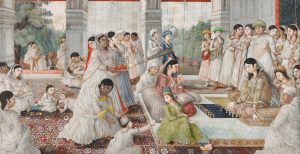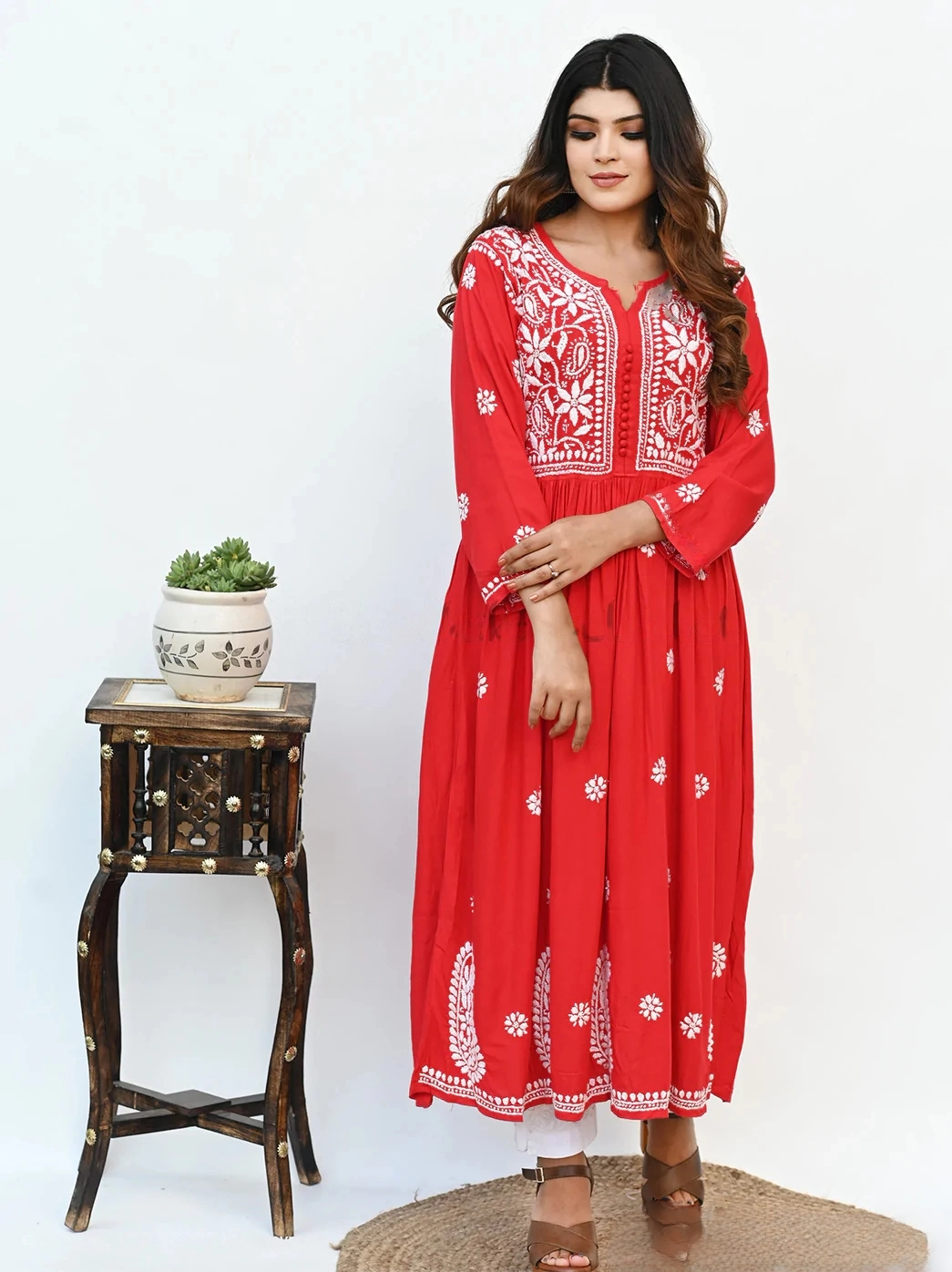As you look forward to wearing Chikankari outfits, there is a wide variety that you can go through before making up the final choice. To be more on the positive side, the Chikankari art form that originated from Lucknow in itself is a wide term that consists of numerous options in clothing.
While looking at the history of Chikankari outfit, it’s tough to say that its origin lies in India. As it was an art form that flourished during the Mughal era and is still seen as a great resemblance for grace and beauty.
Now, if you are someone who has not ever worn a Chikankari outfit, don’t worry, as we can give you a detailed idea of its various looks!
Read Also: Chikankari: An Indian Ethnic Wear
Chikankari: An Ancient Art Form

The beautiful form of Chikankari outfit is a centuries-old tradition that’s more than simply putting designs on fabric. The early designs and embroidery work of Chikankari date back to the 3rd Century BC, when “flowered muslins” were very much common.
With elegance, grace, and a lot of technique, a unique piece of Chikankari is produced. Likely to say, Chikankari is not just creating beautiful embroidery on fabric, but it’s more like an ancient art form.
While talking about the technique and making of Chikankari stands out among various other forms of embroidery work. Moreover, in the present time, Chikankari has evolved with the indulgence of modern methods to make it more trendy and adaptable. Yet, the most accurate form of art is still blooming as the roots of Chikankari are faithfully in each of its designs.
Chikankari Outfits Designs & Motifs

The base of Chikankari is to understand that each design consists of – flowers, leaves, geometrical patterns, and many such beautiful arrangements. They are more on the delicate form of embroidery rather than making big pictures and animal prints.
While talking about the Lucknowi Chikankari artwork, there are many sorts of embroidery designs. You will come across the following stitches of Chikankari Kurti – jaali work, bakhiya or “shadow embroidery,” hool, tepchi, and many more.
Modern & Ancient Chikankari

We all know that Chikankari is not just a clothing attire but an art form that’s evolved through the years. Earlier, there was more white-on-white work of Chikankari than too on light fabric like muslin and cotton. Presently, you will come across various colors, shades, patterns, and different combinations of work on which Chikankari embroidery looks outstanding.
See Also: Chikankari & It’s Tradition in Lucknow
Here are a few points to go through –
Shadow work or “bakhiya” embroidery on Chikankari was a basic for white thread work on white fabric. In addition, the quality of the material was very light so that the shadow could be easily visible on the fabric.
Even today, the bakhiya Chikankari design is trendy, but there’s a slight difference. You may be able to see the work design on various types of fabric materials using different techniques of design.
The modern-day is much inspired by the cultural form of Chikankari, which can be visible through various trends. Youngsters are making this art form more likable by involving it in their everyday styling wear outfits.
Bottom Line
Those who are new to the terms of Chikankari; remember that it’s the simplest form of clothing attire. Along with looking elegant, you can even style it with a modern look; still, it would look desirably amazing!
If you are not so sure about how to style your Chikankari outfit, there are various options available online. Though the fabric, material, and patterns look simply graceful, it takes a lot of effort to create a design. The technique, and hard work to create a single piece of Chikankari requires years of practice and skillfulness.
Related Articles:
Chikankari VS. Lucknowi Chikankari

